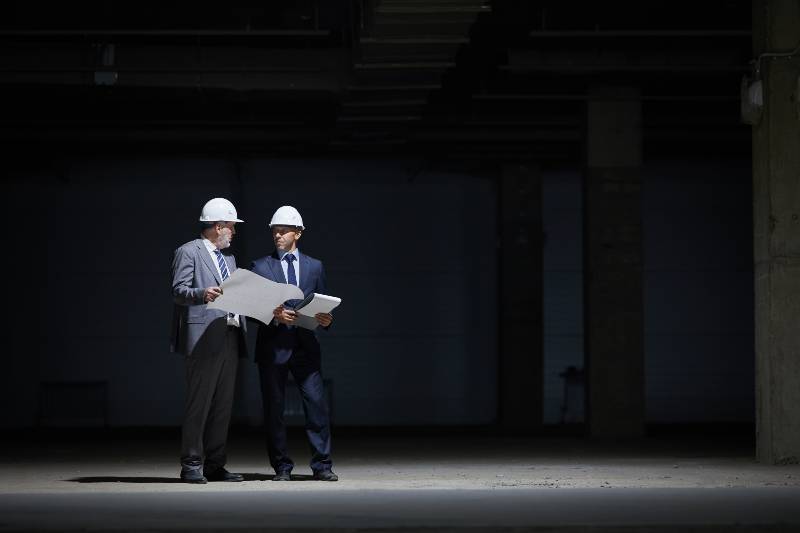There are many different types of real estate investments that you can make, and one option that is growing in popularity is multifamily properties. But is this type of investment right for you? In this blog post, we will discuss the pros and cons of investing in multifamily properties so that you can make an informed decision about whether or not to invest.
Multifamily real estate investing can be time-consuming and expensive, but it can be a financially rewarding investment for individuals who can avail of the initial outlay. If you can afford it, start with smaller types of structures and gradually expand your portfolio.

What is a multifamily property?
A multifamily property is a building or group of buildings containing two or more residences. These can be apartments, condos, townhouses, or other types of housing units.
Multifamily properties are often managed by property management companies that oversee all aspects of the building’s operations, such as maintenance and repairs.
The Pros of Multifamily Investment Properties
Multifamily investments are a great way to diversify your portfolio and make money. The pros of multifamily investment properties include:
Cash flow
Cash flow is the amount of money that is generated from the rental property. This can be used for paying off debt, buying new properties, and investing in other things.
The main advantage of an investment property is the cash flow. Renting out a unit to a tenant can generate income that is more predictable than other investments. In addition, the rental market is less volatile than stocks and bonds. The rental income has been on the rise for many years now, and it looks like this trend will continue for the foreseeable future.
Easier to finance
The process of obtaining financing for multifamily investments is simpler than for single-family homes because lenders understand how to evaluate income from multiple sources over time. This makes it easier for real estate investors to obtain loans on their properties.
Because multifamily real estate is more common and has a higher value, banks have more data on them and can better assess the risk of lending against them.
That means that you’ll find fewer lenders for single-family mortgages, and the ones who do lend will be more restrictive about their guidelines. But there are plenty of lenders for multifamily mortgages, so it’s easier to find one that fits your needs.
Scalable
If you want to increase your income, you can simply rent more units in the same building or in another building that you own. You can also use a management company to help you with this.
Multifamily investment properties are less risky than single-family homes and condos because there are multiple tenants who pay rent on time every month, leading to fewer vacancies and evictions. These properties also have higher returns than single-family homes or condos; therefore, they can provide investors with more money at the end of each month!
Tax benefits
One of the biggest advantages to investing in multifamily properties is that you can take advantage of tax deductions for your rental properties. This means you can deduct mortgage interest and property taxes from your income tax return each year. You also have the option of claiming depreciation on your rental properties, which reduces your taxable income over time. You may even be able to write off other expenses associated with managing your rental units, such as utilities and maintenance costs.
Passive income
One of the biggest advantages of owning a multifamily property is that it will produce income for you without much work on your part. This is called “passive” income because it happens on its own, even when you aren’t actively managing it. In addition to creating wealth from rent payments, multifamily investments can also provide additional cash flow from other sources such as utilities or telephone services.
Simplicity
The process of buying, selling, and managing multi-family properties is much simpler than other types of investments. In some cases, you may only need to find one tenant and then wait for rent checks to start rolling in. Other times, you may need to manage several units at once. But regardless of the situation, owning multiple units is often easier than owning just one because there are more opportunities for revenue streams.
Less Risk
The single biggest advantage of multifamily investment properties is that they’re less risky than single-family homes or commercial real estate. This is because these properties typically have more units, which means there’s less chance that one tenant will default on their rent and ruin your entire investment. If one tenant does default, it will have a smaller impact on your overall profit margins for the year than if it had happened in a single-family home or office building.
Because they’re managed professionally, the vacancy rate on multifamily properties is typically much lower than on other investments. This means that you won’t have any trouble finding tenants when one moves out; instead, you’ll be able to fill the space immediately with a new renter who’s looking for somewhere to live. The risk of the cash flow wouldn’t be visible.
Gain Appreciation During Exit
The value of your property should increase over time which means that they can increase in value as they age, which will help offset any depreciation you might face during ownership. If you’re able to sell your property for more than what you paid for it, then you can use this gain as a source of funding for another property or perhaps even retire early.
Requires Fewer Loans
Multifamily investment properties are a great way to build wealth. They usually require fewer loans than single-family homes, so it’s easier to get started with a small down payment. And the potential for profit is higher because you can charge more rent per square foot than you could from a single-family home.
The Cons of Multifamily Investment Properties
Investing in multifamily properties is an excellent way to build wealth. However, it’s important to understand the potential drawbacks of this investment strategy.
Greater Upfront Investment
The first thing you need to know about multifamily properties is that they require a greater initial investment than other types of real estate investments. This is because most investors purchase multifamily properties with cash, while single-family homes are usually purchased with a mortgage (at least at first).
This difference in financing means that an investor who wants to buy a single-family home must only come up with 20% or so of the purchase price (or $80,000 at current rates), while someone looking to buy a multi-unit building must come up with more like 30% or 40%.
Competition
One of the biggest challenges you might face is competition from other investors in your area. If you buy a property that doesn’t have a lot of competition in its market, then you should be fine. However, if you buy a property in a market where there are a lot of similar properties on the market, then you may have difficulty selling it later on. In this case, you should consider finding a property that’s a little bit different. The more unique your property is, the easier it will be to sell later on.
More to manage
When you own a single-family home, you only have one unit to worry about. If you own multiple apartments, you’ll need to manage each one separately and hire staff for each building or apartment complex. This can be very time-consuming and difficult if you’re not familiar with the process. It’s also more complicated to rent out all of your units since you’ll need to check on them regularly. In addition, it’s difficult to ensure that each tenant is paying their rent and following the rules of their lease agreement.
Experience Is Usually Needed
One of the biggest disadvantages of multifamily investment properties is that experience is usually needed to manage them properly. You need to know how to deal with tenant issues, such as rent payments and repairs, as well as the legal requirements for owning rental property. Without experience, you could end up losing money on your investment because you don’t know what you’re doing.
More Complicated
Investing in multifamily properties can be more complicated than single-family homes, especially if you’re new to real estate investing. You may need more money and more time to get started, and it may take a while before you start seeing any profits from your investment.
Compared to single-family rental homes, multifamily investments are more complicated. The more units you have, the more work you have to do. You’ll have to inspect your properties regularly and make sure they’re maintained properly. You’ll also need to deal with problems that arise on a regular basis, such as plumbing issues and broken appliances.
Dealing with Tenants
The biggest downside of investing in multifamily properties is dealing with tenants. If you want to make money from your investment, you’ll need tenants who pay rent on time and take care of their unit. This means that renters will call you when there’s a problem and expect you to fix it quickly. If they don’t like their neighbors or if their neighbors don’t pay rent on time, they will call you about it. You’ll have to deal with complaints about noise or parking issues, and sometimes even evictions, if tenants can’t get along with each other or their neighbors, won’t pay rent.
Property Management For Multifamily Properties
Property management for multifamily properties is an important part of the overall real estate investment process. Property management involves the day-to-day operation of a rental property, including maintenance, leasing, and accounting.
Multifamily Properties Offer Several Types Of Property Investments
Apartment buildings: These are usually three- or four-story buildings that have multiple apartment units on each floor. Apartment complexes also commonly include amenities such as swimming pools and laundry rooms.
Duplexes: Duplexes feature two separate living areas on one property with two separate entrances from outside the building and two kitchens inside the building. Duplexes are typically larger than single-family homes but smaller than apartment buildings and may be owned individually or jointly by two families who share certain amenities like lawn care and snow removal duties among themselves.
Townhouses: Townhouses are similar to duplexes in that they consist of two separate living areas on one property with two entrances from outside the building and two kitchens inside the building. However, townhouses are typically smaller than duplexes and are often built in groups of three or more units on one property. They also tend to be owned individually by each family living there rather than jointly with other families.
Apartments And Condominiums That Are Larger Multifamily Properties
Apartments and Condominiums that are larger multifamily properties have been the best-performing asset class over the last decade. The main reason is that they have stronger cash flow than smaller apartment buildings.
There are a few reasons for this. First, bigger apartments/condos typically have more than one unit per building. This means that there are multiple tenants who can pay rent to you each month. It also means that there is less risk of losing a tenant if one moves out. The second reason is that bigger apartments/condos usually have more amenities (gym, pool, etc.) which makes them more attractive to potential renters.
The third reason is that these types of properties tend to be located in areas with higher demand. This means that they will not only get better rent but also tend to appreciate faster than smaller apartment buildings which are located in areas where there isn’t much demand for rental properties.

Multi-unit Management Requires Expertise And Experience
Multi-unit management is a specialized field of property management and requires expertise and experience. It is not the same as managing a single-family home or even a small apartment building. A multi-unit property manager must be able to effectively manage multiple units with varying needs, budgets, and owners in mind. Being able to manage a vast number of units, tenants, and employees is a skill that comes with time and experience.
In addition, a multi-unit property manager must be able to manage all aspects of the business, including accounting and financial systems. This includes maintaining accurate records and reporting to owners on a regular basis.
In order to be successful, the multi-unit manager must have their own team that is able to assist with the day-to-day operations of the property. This includes managing maintenance issues, tenant relations, and rent collections.
Investing in Multifamily Properties in Los Angeles
Investing in multifamily properties in Los Angeles is a great way to secure a stable, long-term future. This city is positively booming with opportunity.
There are several factors that make it an ideal place for investors. First of all, there are many people who want to live here. Los Angeles has always been seen as an open-minded city where people can be whoever they want to be. The creative spirit that has driven so many artists, musicians, and writers here has also led to many people choosing this city as their home base on the West Coast.
Another factor that makes investing in multifamily properties in Los Angeles so profitable is the fact that there are so many different types of zoning regulations across different areas of the city. Some neighborhoods have stricter rules about building height or how close buildings can be built together than others do, which means that each one has its own unique real estate market and price points for investors looking to buy property there.
Investing In Multifamily Properties
Before investing in multifamily properties, you’ll want to do your homework and learn everything you can about this type of real estate investment. The key is to find a quality property and manage it properly so that you can maximize your profits. Here are some things you’ll want to consider before jumping into this market:
Is it a good time to buy a multifamily?
If you’re considering buying a multifamily property, now is a good time to do so. Rents are rising, vacancy rates are low and interest rates are still relatively low.
- Rents are on the rise. The national median asking rent for an apartment in 2020 was $1,104 ($1,162 adjusted for inflation), according to iPropertyManagement, the national average rent increased over 20% year-over-year (YoY) at one point in 2021, the highest spike on record.
- Vacancy rates are low. Vacancy rates for apartments were 4% to 5% in September 2021, according to research firm RealPage Inc. This means there’s a healthy supply of properties available for rent and landlords can be more selective when choosing tenants.
- Interest rates are still low. According to MoneyCafe interest rates on mortgages remain near historic lows as well — just 3.73 percent for a 30-year fixed-rate mortgage as of January 2018 — making it easier for buyers to afford their monthly payments.
How much profit should you make on a rental property?
The answer is not as simple as it might seem. You need to take into account the cost of the down payment, closing costs, and repairs on your rental property, while also considering how much money you’ll make each year.
The amount of profit you make on a rental property depends on a number of factors, including:
- Rental market. The higher the demand for rental properties in your area, the more you can charge for them. If there are many people competing for the same properties, you may have to lower your asking price.
- Size of home. A larger home will rent for more than a smaller one. However, it also costs more to maintain and repair larger homes than smaller ones.
- Condition of the home. A well-maintained home will rent faster and for more money than one in bad shape.
- Location of home. Homes located close to work or shopping are more desirable and tend to rent quickly at higher prices than those farther away from these areas.
What is the difference between multifamily and condo?
Multifamily properties are owned by one entity, while individual units in a condo building are owned separately by individual owners. One key difference is that each unit in an apartment building has its own separate lease agreement with the owner.
When you sign your lease agreement to rent an apartment unit, you’re agreeing to pay rent for the entire apartment building as well as for any utilities included with your rent payment (such as water). In contrast, each condo unit has its own mortgage payment and deed registration, so owners are responsible only for their individual unit’s expenses and liabilities.
Another key difference between condominiums and apartments is how they’re taxed. Condos are taxed at their full value (the value of all units combined), while apartment buildings are taxed based on their assessed value — which may be lower than their actual value due to depreciation or other factors.
Conclusion
Multifamily properties are a great investment opportunity for those looking to get into the real estate market. There are many pros to a multifamily investment property, but there are also some cons that should be considered before moving forward.
In this blog post, we’ve outlined both the pros and cons of multifamily investing so you can make an informed decision about whether or not this type of property is right for you. If after reading this post you decide that multifamily properties are right for you, please call or schedule a free consultation with me today. I would love to help you get started in this exciting and profitable market!
Blog Articles Disclaimer
The information presented in articles on our website or affiliated platforms is exclusively intended for informational purposes. It’s crucial to grasp that this content does not constitute professional advice or services. We strongly recommend our readers to seek guidance from appropriately qualified experts, including, but not limited to, real estate and other attorneys, accountants, financial planners, bankers, mortgage professionals, architects, government officials, engineers, and related professionals. These experts can offer personalized counsel tailored to the specific nuances of your individual circumstances. Relying on the content without consulting the relevant experts may hinder informed decision-making. Consequently, neither Tolj Commercial Real Estate nor its agents assume any responsibility for potential consequences that may arise from such action.






